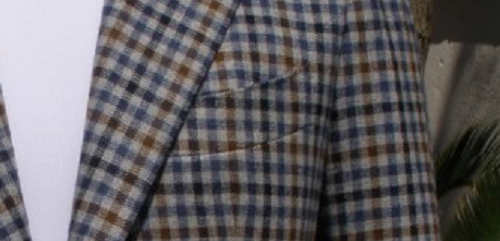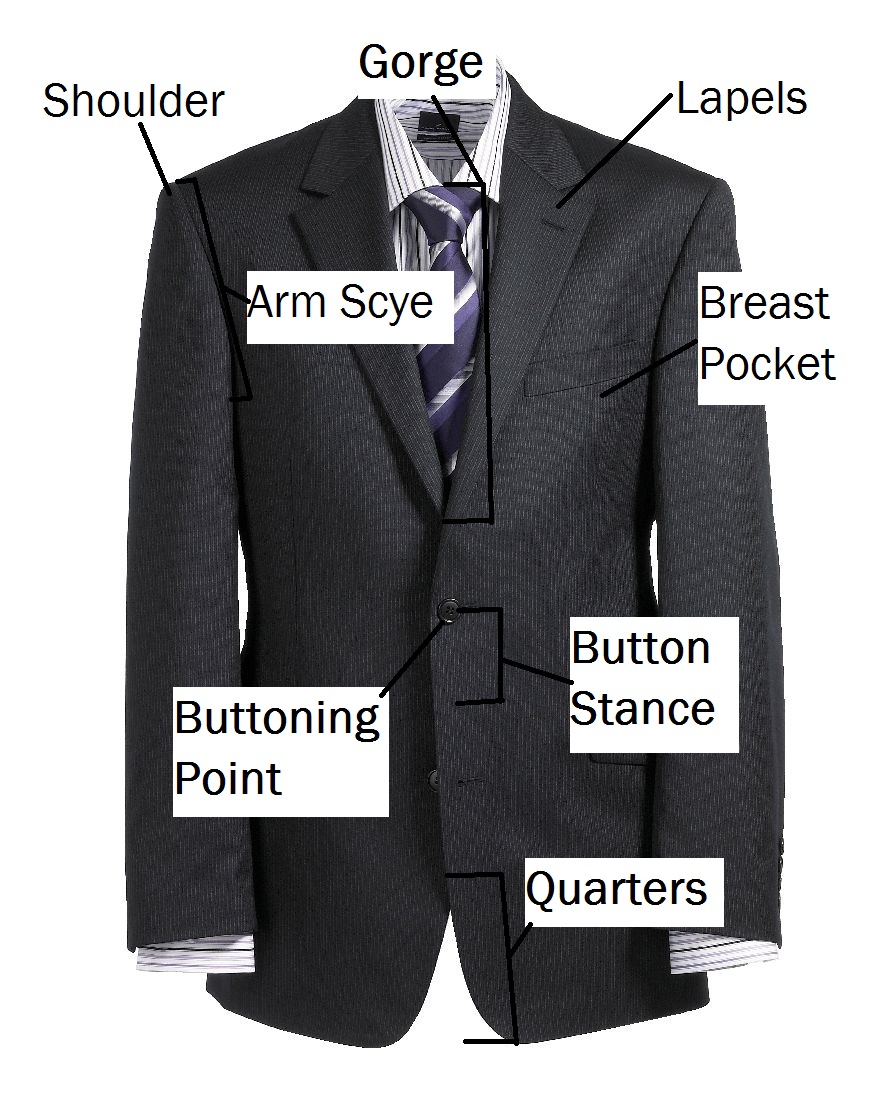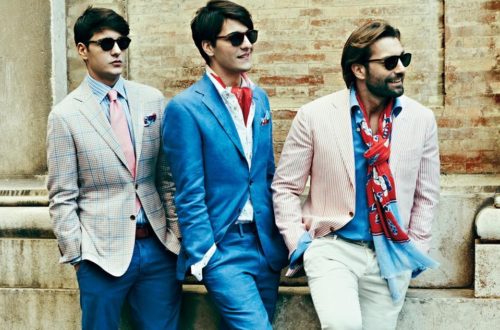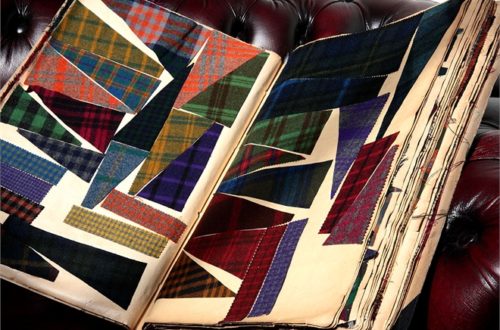Note: Suit 101 is a weekly series that discusses on the finer side of menswear.
Last week, we talked about Vitale Barberis Canonico, one of the oldest and largest mills in Italy. But the mill is one part of the suit game. Tailoring is, in my opinion, what makes or breaks a suit. Thus, a post must be dedicated to the science and art of tailoring – in edible chunks of course.
1. Anatomy of a suit
Like body parts, there are parts to a suit.
Parts of a suit:
I shall not go on a lengthy tirade on each parts of the suit but the image above is self-explanatory. If you wish to embark on the details, click here.
2. Bespoke vs. Made-to-Measure: is there a difference?
People tend to mistake bespoke as made-to-measure and vice versa. Bespoke is when you select your fabric, and get your suit made by the tailor from scratch. Imperfections are expected, and it is what makes the suit an art, in a sense.
On the other hand, made-to-measure is when you enter a store (think Zegna, Canali, or Brioni), select a suit, have your measurements taken, and get the suit altered to your measurements.
So, bespoke is not made-to-measure.
3. Different tailoring schools?
Not all tailors are built the same. Some may beg to differ but there exists different tailoring schools, even within Italy.

As illustrated above (or at least by a Japanese magazine), there seems to be a difference between Neapolitan, Roman, Florence and Milanese tailoring.
The post is all in Japanese (which I cannot read) but to give you a brief idea:
a. Neapolitan tailoring is characterized by significant shoulder slope correction (and zero padding), a boat breastpocket and a glass shaped pocket.
b. Roman tailoring has slightly strong shoulders, and slimline features that emphasizes the V masculine form.

c. Florence tailoring is best described by the extreme convex shoulders, extremely wide lapels and open quarters, which gives an X shaped silhouette.
d. Milanese tailoring, according to the translation, is well structured than other schools due to additional canvassing. The quarters also tend to be less open compared to their Neapolitan counterparts.
Despite the demarcations in style, many have mentioned that the regionalizations of tailoring is truly overblown: most tailors have their own distinctive style, and sometimes, tailors adjust certain features (i.e. lapel width) to customers’ requests. So take this lightly.
4. Neapolitan tailoring
However, I must dedicate a segment to Neapolitan tailoring. Much is talked about Neapolitan tailoring — often with a kind of reverence amongst the media and bespoke manias. What makes Neapolitan tailoring so different from the beautiful suits of Saville Row?
Well, back in the days, Neapolitan tailoring is Saville Row tailoring until Mr. Gennaro Rubinacci came along and brought forth the deconstructed suit, which many would come to recognize as the Neapolitan jacket (Giacca Neapolitana).
http://www.youtube.com/watch?v=19aJP0h2xgI
As mentioned above, the Neapolitan suit:
A. Has very little canvas
B. Unstructured shoulders


c. Barchetta (boat) breast pockets

There are other details (i.e. more open quarters away from the hips, darts on the side that gives emphasis to the waist, lightweight fabric more suited for warm Napoli climate etc) but I shall not dive into details. Point is, the Neapolitan jacket was meant for more of a weekend, casual kind of suit, than a work suit:. Given that the patrons that Rubinacci had in those days, it sort of self explanatory: mostly nobles bought from their workshop. However, what is most characteristic of Neapolitan tailoring is its sprezzatura flair (nonchalance) without compromising the bella figura of a man.
5. Tailors today: a dying art?
Bespoke is a dying tradition. Not many people are willing to take up apprenticeships at a young age (most of the renowned Italians tailors start when they are as young as 12). Many rather work in the office than holding a needle and thimble. Also, some customers just do not have the time to go in for several fittings. Most opt for made-to-measure, even if it is sometimes more expensive than getting a suit made from scratch.
However, bespoke is definitely here to stay, at least, for the younger, elite clientele, who are fighting against anything mass produced. I hope it does stay!
Credits: Parisian Gentlemen, Bespoken, Riddle magazine






No Comments
Pingback:
Pingback:
Pingback: